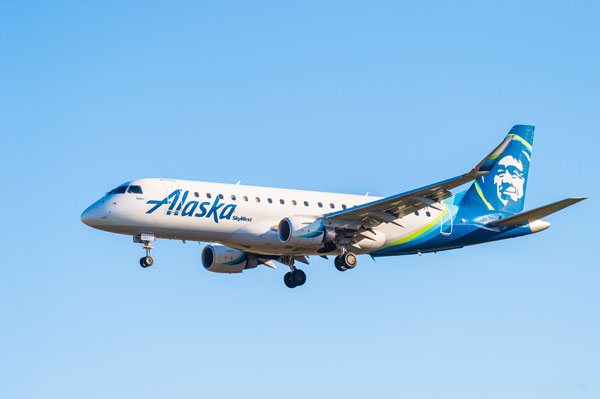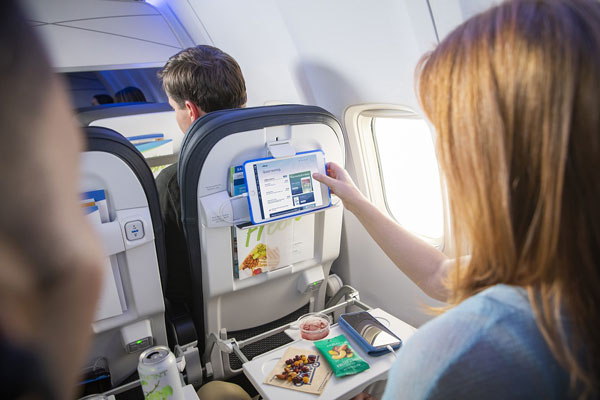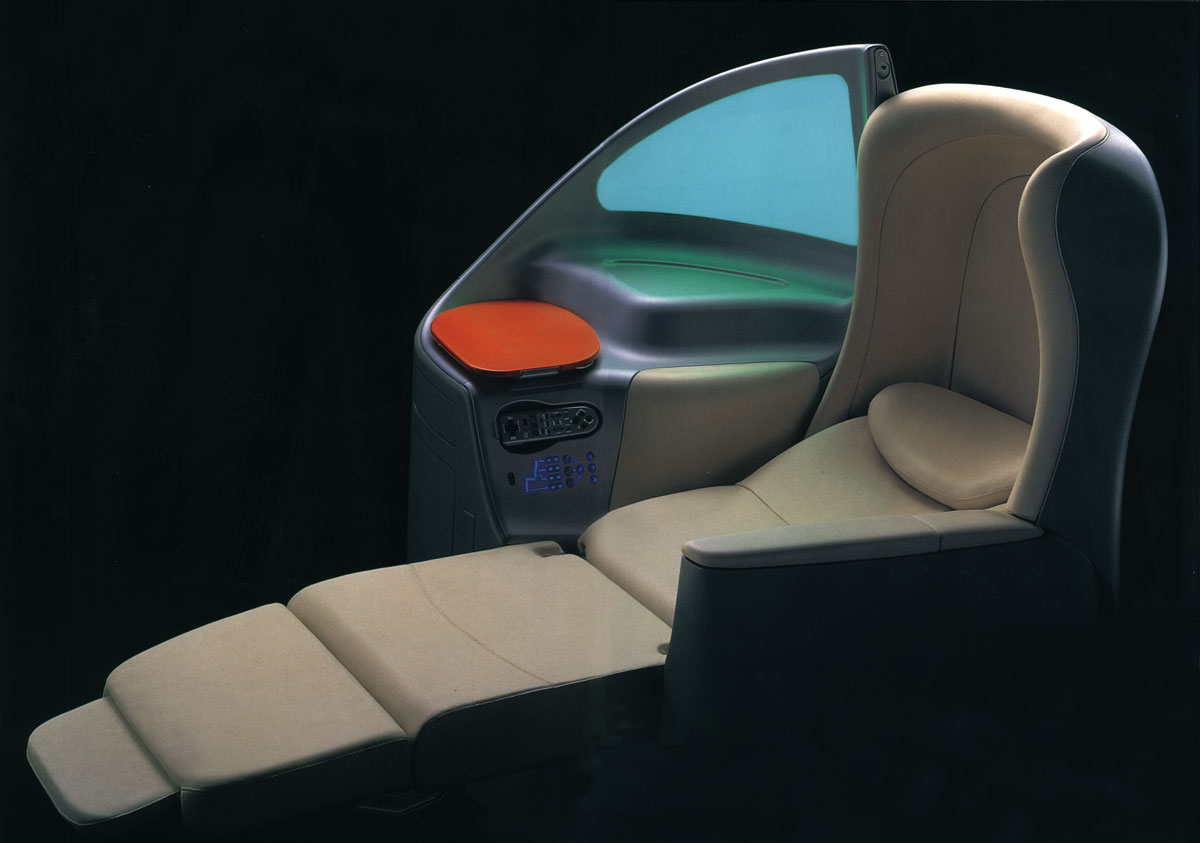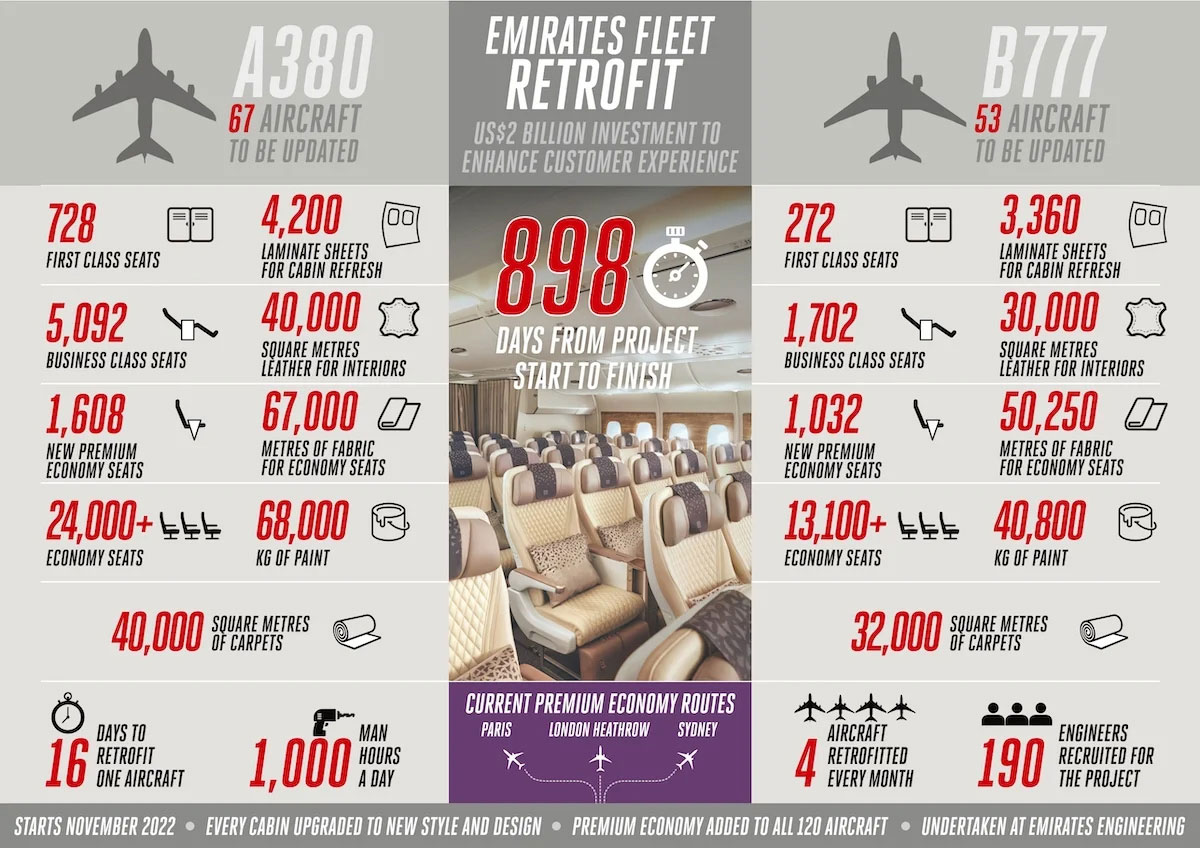Chapter 13 UPGRADES: REFURBISHING ALOFT
UPGRADES: REFURBISHING ALOFT

Embraer E175. ‘Flying with a Happy Face’. |
Some people cite the ‘House-Renovation Rule’: it will cost twice as much — and take three times as long — as you first thought it would. Others say that upgrades constitute the Royal Road that will eventually lead to true product perfection. But in the end, strictly mandated regulatory requirements govern all stages of the decision-making process.
Discover the behind-the-scenes work that goes into enhancing the inflight experience! This Chapter delves into the constant upgrade and refurbishment programs that airlines implement to provide top-notch customer service and meet heightened safety and security requirements. Learn about major upgrades, such as strengthening cockpit doors and complying with the mandated 16 g standard for seats, which involves a rigorous forward-direction dynamic test. Additionally, find out about the often-overlooked crew rest accommodations, which are steadily upgraded as modern aircraft fly longer distances and labour contracts consolidate rest periods for crew members. This Chapter will leave you feeling optimistic about the future of airline travel and the dedication of the industry to constantly improve.
“TO PROVIDE A COMPETITIVE STANDARD OF CUSTOMER SERVICE, IT IS NECESSARY TO CONSTANTLY REVIEW AND REDEFINE THE INFLIGHT PRODUCT EXPERIENCE”
TO PURCHASE THE E-BOOK APP
FOR APPLE DEVICES |
FOR KINDLE DEVICES |
FOR ANDROID DEVICES |
||
 |
 |
 |
||
ISBN 0-991-41011-4 |
||||
AIRCRAFT INTERIOR DESIGN

Personalization of inflight entertainment (IFE): Instead of seat-back TV screens, some new-style economy-class seats feature USB charging ports and tablet holders for passengers wishing to stream selected content on their own mobile devices. Photo credit: Alaska Airlines |
Recalling major fleet-upgrade programmes during her time at United as Staff Representative Engineer, Cabin Interior and Exterior Livery Specialist, Alina Pham outlines the key stages of the approval and certification process.
‘Designers have to create a scheme that will achieve pleasing aesthetic standards, as well as comply with certification and maintenance requirements.’
You will learn about the intricate planning process involved in updating the look of an airline fleet. From defining the colour scheme to ensuring it complies with certification and maintenance requirements, every step is crucial to the success of the project. You will gain insight into how designers use a subjective process, market research, and input from departments across the company to select the perfect colours. Additionally, you will discover the importance of installation considerations in the approval process. This Chapter provides a wealth of information for anyone interested in the aviation industry or those looking to embark on a similar project. Don't miss out on this opportunity to learn from the experts!
“THE COST LEVELS OF UPGRADE AND REFURBISHMENT PROGRAMMES CAN VARY ENORMOUSLY BECAUSE SO MANY PURCHASE CONTRACTS ARE QUANTITY SENSITIVE”
Upgrade and refurbishment programmes can be costly, but there are ways to make changes that comply with budget limitations. This Chapter outlines four categories of upgrades, ranging from minor changes like soft furnishings and accessories, to large-scale upgrades that can cost millions of dollars. The main focus is on cost-effectiveness and good financial housekeeping, using up existing supplies before introducing new items. The logistics department plays a crucial role in planning and executing these upgrades, including phasing out old items and introducing new ones. This Chapter provides valuable insights and practical tips for airlines looking to upgrade their inflight offerings, including how to gather market feedback and make changes on a budget. It takes careful planning and execution for airlines to transform their inflight experience for their customers.
TO PURCHASE THE E-BOOK APP
FOR APPLE DEVICES |
FOR KINDLE DEVICES |
FOR ANDROID DEVICES |
||
 |
 |
 |
||
ISBN 0-991-41011-4 |
||||
INNOVATIVE DESIGN & LUXURIOUS FEATURES
Readers will discover the innovative design and luxurious features of Japan Airlines' Skysleeper Solo, a first-class seat that revolutionized air travel comfort in the early 2000s. Through the expertly crafted words of acclaimed designer Ross Lovegrove, readers will learn how the Skysleeper Solo's sensual, body-hugging curves were inspired by the natural world, and how it was designed to provide ultimate relaxation and privacy for passengers. Technical details and measurements are provided, showcasing the seat's impressive width and length when fully reclined. Readers will also discover how Japan Airlines decreased the number of seats in the cabin to provide a more spacious layout and how the Skysleeper Solo won the prestigious Japan Industrial Design Council 'Good Design Award' in 2002. This Chapter is a must-read for anyone interested in the evolution of air travel luxury and comfort. Don't miss out on the opportunity to delve into the world of the Skysleeper Solo and its revolutionary impact on the airline industry.

At the turn of the millennium, in an upgrade of its First Class cabin, Japan Airlines introduced into service its new Skysleeper Solo |
Products and services offered to customers are crucial for airlines to remain competitive. Dive deeper into the massive upgrade program undertaken by Qantas for their international Business Class, costing an estimated US$300 million. The program involved designing new Skybeds with extensive adjustment controls, stowage options, power-supply outlets, and back-massage options, among other features. With the help of computer graphics, the planning process was streamlined, and designers and airline management could visualize a range of possible scenarios before finalizing the technical drawings. Furthermore, sophisticated interactive animation technology allowed customers to view their aircraft cabins from various perspectives. This Chapter highlights how computer simulation has become an invaluable tool for airlines in reducing cost and time envelopes while improving overall customer satisfaction. As airlines continue to seek ways to upgrade their products and services, this Chapter is an essential read for anyone interested in the future of the aviation industry.
You will also read about the importance of proper testing and selection of materials for refurbishment and new image programmes in the airline industry. Aviation Specialists emphasize the need for testing heavy-use items such as seat fabrics to avoid frequent replacements, which can add to the logistical limitations of maintenance budgets. Furthermore, they recommend involving all stakeholders in the design process, including seat-structure manufacturers, designers, and seat dress-cover manufacturers, to ensure a faster, more economical, and less painful road to a successful image completion. It also highlights the cost-effectiveness of comprehensive refurbishment programmes, such as the one carried out for SAS, which renewed every surface that the passenger came in contact with, resulting in the perception of flying on a brand-new aircraft.
AIRCRAFT INTERIOR REFURBISHMENT
Dive into the heart of aviation innovation and refinement with our comprehensive guide, carefully constructed to illuminate the meticulous processes behind transforming airline fleets into marvels of modern design and comfort. From the drawing board to the skies, each Chapter reveals the secrets to executing successful refurbishment and upgrade programs, balancing cost-effectiveness with luxurious design. Learn from industry giants like Qantas and Japan Airlines, and leverage cutting-edge computer simulations to revolutionize your approach to airline service upgrades. Whether you're a professional in the aviation field or an enthusiast eager to understand the future of air travel, this essential read provides an unparalleled look into the precision and innovation driving airline industry advancements. Don't miss this opportunity to gain expert insights and potentially transform your own projects. Secure your copy today and take the first step towards the forefront of airline design and service excellence!

Photo: Emirates
TO PURCHASE THE E-BOOK APP
FOR APPLE DEVICES |
FOR KINDLE DEVICES |
FOR ANDROID DEVICES |
||
 |
 |
 |
||
ISBN 0-991-41011-4 |
||||
ACCESSIBILITY: SPECIAL NEEDS
EXCERPT from JETLINER CABINS: Evolution & Innovation E-BOOK
Chapter 8/Accessibility: Special Needs
EXPO 2019: SPECIAL NEEDS Case Study
attached to Chapter 8

FORMIA

Las Vegas, McCarren International Airport

GermFalcon
Airline passengers are scrutinizing the evolution of jetliner cabins as airlines and airports move ahead with innovations to cope with the problems created by the Covid-19 pandemic.



Factorydesign
The great challenge for the airline-industry sector is to reassure passengers that they are flying in a clean, safe and healthy environment — and to provide proof of same.

Courtesy Philippine Airlines

Courtesy Philippine Airlines
More information on Cabin Health is provided in JETLINER CABINS: Evolution & Innovation E-BOOK APP, in the Case Studies attached to Chapter 9/Look Smart: Keep Clean; and there is detailed information about air travel for disabled passengers in the Case Study attached to Chapter 8/Accessibility: Special Needs.
